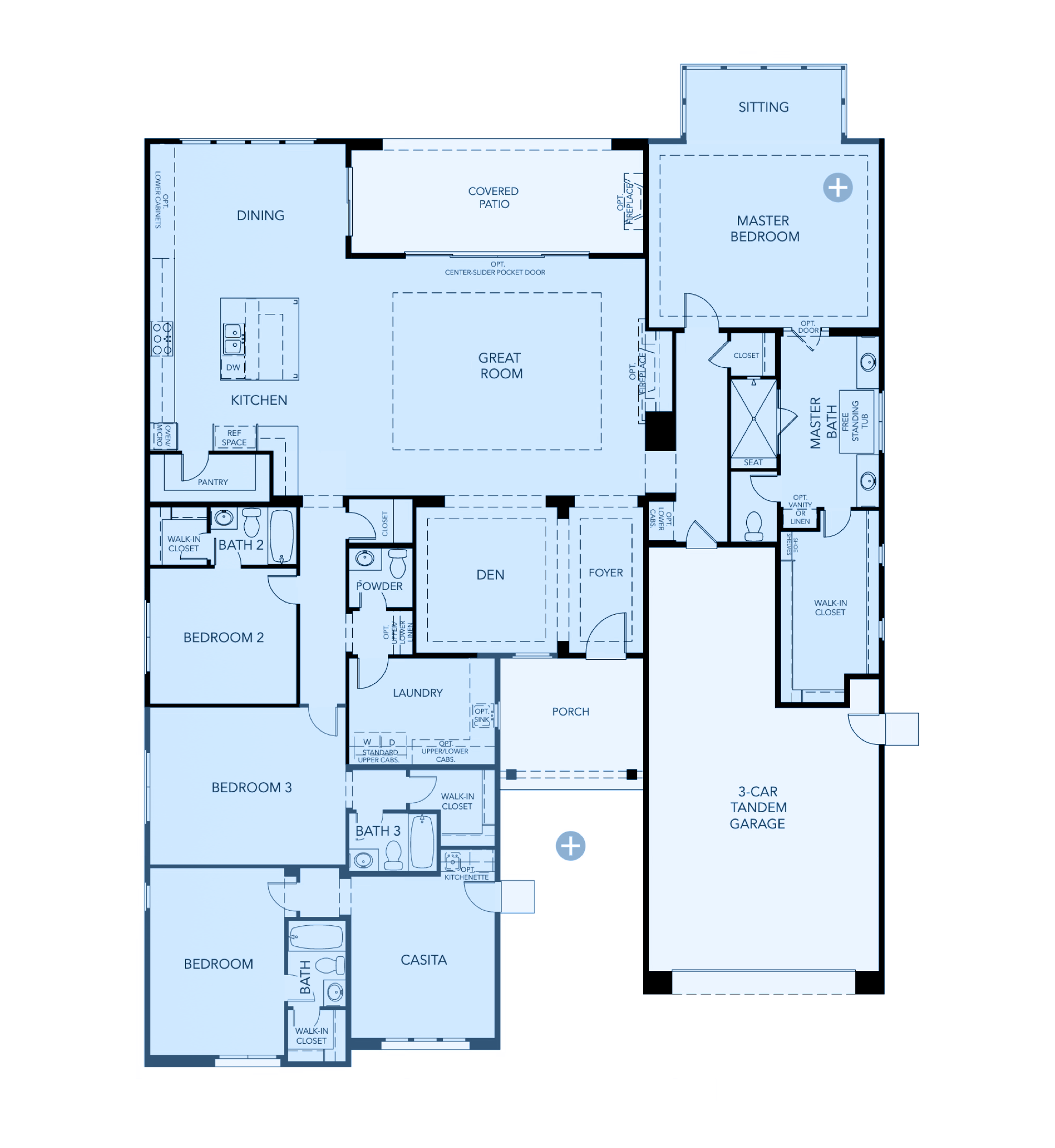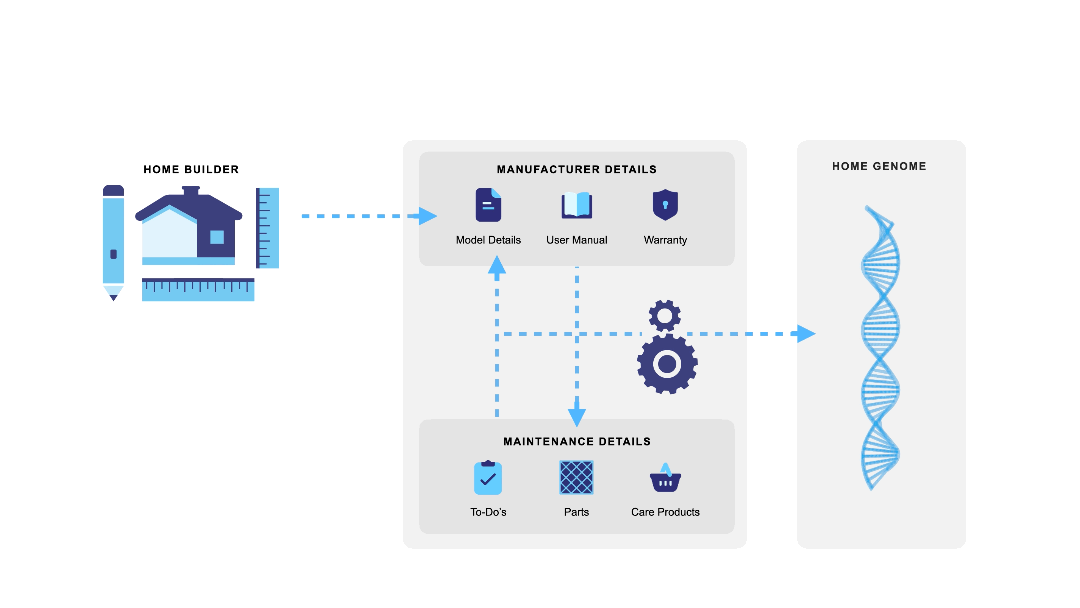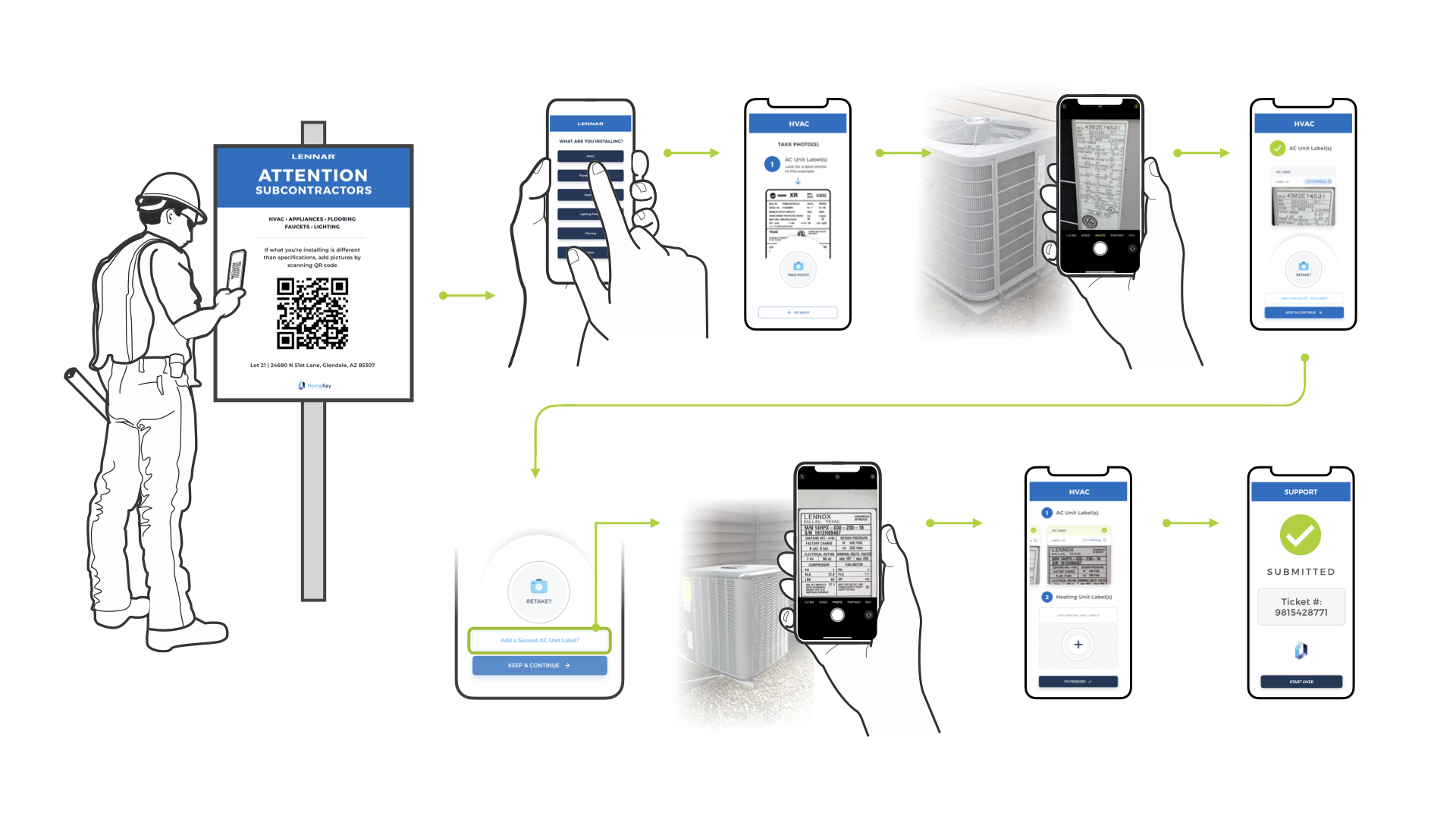HomeKey Systems:
Making the House of the Future Smarter
HomeKey's goal was simple but huge: to make every piece of information about a house, from the paint color in the living room to the model number of the dishwasher, instantly available to the homeowner for the entire life of the house.
The Problem:
Lost Information and High Costs
Home builders (like Lennar) had to deal with lots of confusion. Their staff, from the Construction Managers on site to the Warranty Coordinators answering calls, spent all their time digging through paper files and broken computer programs just to answer simple questions. This wasted so much time and money that customer service became the "least profitable" part of their business. Homeowners were frustrated by a lack of basic info, leading to constant "nuisance calls."
The Solution:
A Digital Twin
My team solved this by creating a Digital Twin, a perfect, detailed digital copy of the physical house. This was the core of our innovation:
The Homeowner App (The Digital Twin): This app was the key to making the house "smart." It gave homeowners instant access to over 25 categories of data about their exact home, including the brand of paint on the walls, the HVAC details, and floor plans.
Proactive Help: Instead of waiting for a homeowner to call, the app automatically sent helpful messages and set up To-Do lists for things like changing the refrigerator filter or servicing the AC. This feature was designed to make home maintenance run on "auto-pilot."
Self-Service Shopping: If you needed a new air filter, the app knew the exact model number and could link you directly to Amazon or Home Depot to buy it. This was a huge step in proactive customer service.
The Builder Console: We gave builders a powerful web platform to manage all this data. The biggest innovation here was designing a gamified dashboard that showed construction managers their community's Activation Rate (how many homeowners were using the app). This turned a simple task into a competition, driving internal staff to get homeowners set up correctly.
Cost Savings
Because homeowners found their own answers, we saw a 50% Reduction in unnecessary customer service calls.
The Impact:
Quantifiable Results
This innovative strategy, driven by a new design and development system, led to massive savings and increased customer satisfaction that was used to secure funding for the company:
My work proved that a focus on smart design and data architecture could transform a costly, fragmented industry into a modern, profitable business.
Customer Adoption
The strategy worked! We achieved an 89% Monthly Actvation Rate with the help of the home builders for the Homeowner App, meaning most homeowners were using the self-service tool.
Operational Efficiency
The new platform made staff faster and more effective, resulting in a 22% Reduction in Average Handle Time (AHT) for customer service teams.










